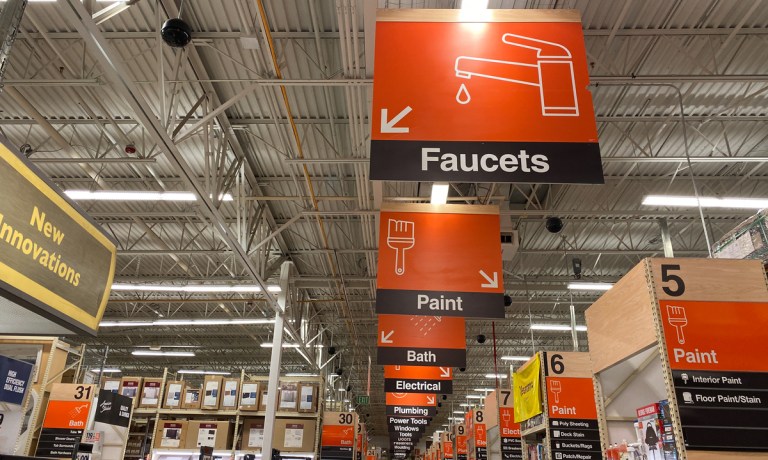But homeowners who might have been contemplating home improvements now face a dilemma. Higher interest payments for large-scale renovations can deter even the most enthusiastic DIY enthusiasts.
Simultaneously, inflation brings its own set of challenges. The surge in prices for materials and labor adds a layer of uncertainty to budget calculations for homeowners looking to undertake major renovation projects.
However, adversity breeds innovation. The combination of rising interest rates and inflation has ushered in a new era of home improvement: small updates and projects. Homeowners are opting for projects that are budget-friendly, manageable and adaptable to the economic climate.
These projects range from repainting a room to upgrading fixtures, and it’s a trend Home Depot is benefiting from.
On Tuesday (Aug. 15), Home Depot reported quarterly results that exceeded expectations, driven by spending by Americans on minor home projects, despite reductions in larger remodeling and renovation expenditures.
Advertisement: Scroll to Continue
“While there was strength in categories associated with smaller projects, we did see continued pressure in certain big-ticket, discretionary categories,” said Ted Decker, chair and CEO. “We remain very positive on the medium- to long-term outlook for home improvement and our ability to grow share in a large and fragmented market.”
In recent years, Americans ramped up spending on big-ticket items like appliances and large-screen televisions. However, this trend has waned. In fact, in April PYMNTS reported that Americans were planning fewer vacations and major purchases as consumers prepared for worsening conditions.
“Overall purchasing plans for homes, autos, appliances, and vacations all pulled back in April, a signal that consumers may be economizing amid growing pessimism,” said Ataman Ozyildirim, The Conference Board’s senior director for economics.
The increasing absence of consumer confidence has impeded Home Depot’s performance extending past Q2 2023. Last quarter, Home Depot reported earnings that showed sales of $37.3 billion, down 4.2% year over year and missed Wall Street revenue expectations.
The revenue shortfall was noted as the most significant Home Depot had experienced in the past two decades. The company’s chief financial officer, Richard McPhail, said he had anticipated a year of moderation after a surge in home improvement projects during the pandemic.
“The state of the homeowner is that they’re very healthy,” he said in May. “They have healthy balance sheets. They have healthy incomes. But I do think — and our professional customers tell us they hear this from their customers — there is that shift, even if it’s temporary, from larger projects into smaller ones.”
At the time, Decker stated in a press release that sales were further affected by decreasing lumber prices and adverse weather conditions.
Read more: Home Depot’s Sales Fall as Consumers Hold Off on Renovations
Home Depot by the Numbers
Home Depot reported on Tuesday that it achieved sales of $42.9 billion in the second quarter of fiscal 2023, a 2% decline year over year (YoY). Comparable sales for the same quarter of fiscal 2023 also experienced a 2% decrease, with a corresponding 2% reduction in comparable sales within the United States.
The company recorded net earnings of $4.7 billion, or $4.65 per diluted share, compared to $5.2 billion, or $5.05 per diluted share, in the corresponding period of fiscal 2022.




